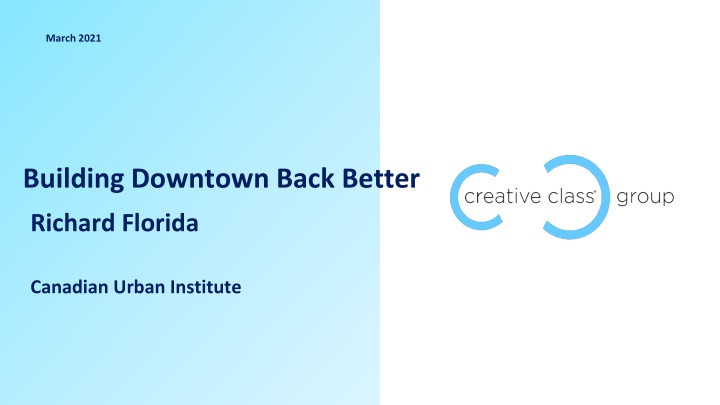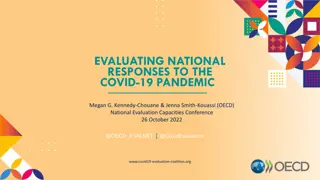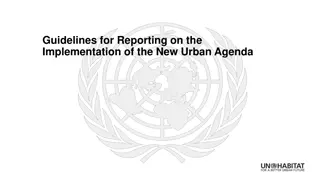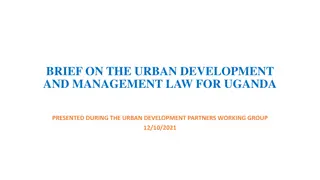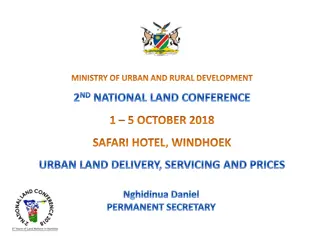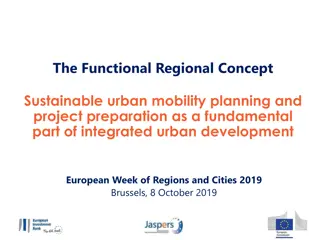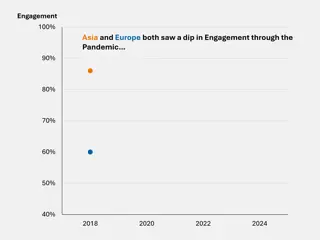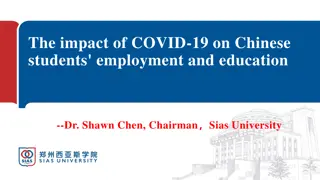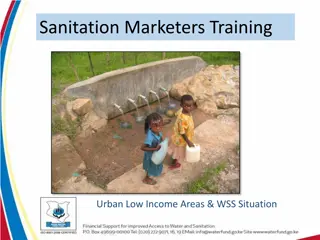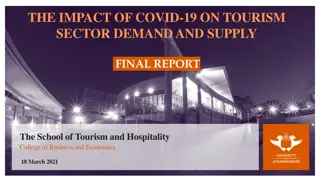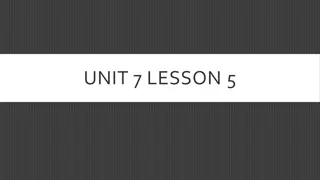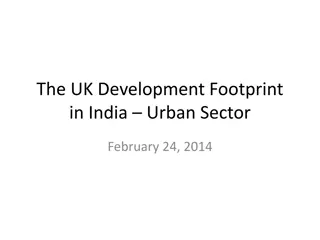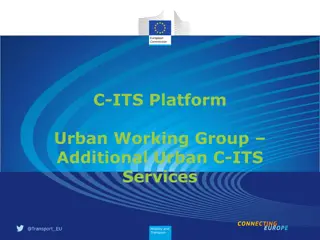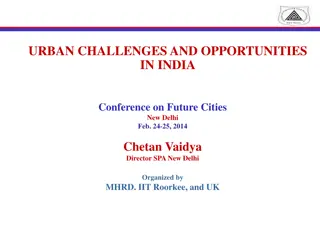Reshaping Urban Living: Trends and Opportunities Post-Pandemic
The post-pandemic world is witnessing a significant shift in urban living dynamics. Factors like pull towards suburbs and push back into cities, remote work acceleration, retail transformation, and reimagined office spaces are reshaping communities and workplaces. This transformation presents unique opportunities to build better, more resilient environments. Embracing changes and adaptability will be crucial in creating thriving urban landscapes in the future.
Download Presentation

Please find below an Image/Link to download the presentation.
The content on the website is provided AS IS for your information and personal use only. It may not be sold, licensed, or shared on other websites without obtaining consent from the author.If you encounter any issues during the download, it is possible that the publisher has removed the file from their server.
You are allowed to download the files provided on this website for personal or commercial use, subject to the condition that they are used lawfully. All files are the property of their respective owners.
The content on the website is provided AS IS for your information and personal use only. It may not be sold, licensed, or shared on other websites without obtaining consent from the author.
E N D
Presentation Transcript
March 2021 Building Downtown Back Better Richard Florida Canadian Urban Institute
Great Urban Reset COVID crisis is a period of accelerated change. Not a But massive acceleration of trend. disruption or break with the past. Once in a Century Opportunity To reimagine and build better communities & workplaces. 2
Factors That Are Reshaping Places Two key factors that are reshaping how and where we live: Pull Factors Push Factors 3
Pull Factors: Out Towards Suburbs and Rural Areas Accelerates & compresses family formation moves Prolonged fear of public transit? Families to suburbs Desire for private amenities 4
Push Factors: In Towards Cities and Urban Cores Young people back to cities. Out of mom and dad s basement. Thick labor markets and mating markets. Young people (25-34) accounted for 50% of population increase in closed-in urban areas since 2010. Young back to cities has followed previous pandemics. 5
Remote Work: The Big Accelerator After: Before: 20% full-time remote Pre-Pandemic: 2% full-time remote 15% part-time remote Another 20-30% part- time remote Early Pandemic: Half or two-thirds remote Workers want 40% of time work from home Now: 33-40% remote Companies planning for 20-25% work from home 6
Post-Pandemic Retail Accelerates ongoing retail shift Unique food, coffee, shopping experiences Commodity retail goes on-line Emphasis on health and wellness Accelerates shift to shopping as experience Arena for social interaction Unique experiential places 7
Post-Pandemic Office The office as we know it a space to work is dead. But need for social interaction and context is not. Rise of the office as experience Office as brand statement Need to entice knowledge workers to work. Office space is especially important for young talent. Opening-up the office to the outside Casualness health, wellness Signature co-working spaces. 8
City/Neighborhood as Office Ongoing shift in social interaction from office per se to surrounding neighborhoods or districts. Unique coffee shops, restaurants, fitness and wellness spaces More upscale, special, actively curated retail Reimagined Third Places A day at the office becomes more like a local business trip. 9
Death and Life of the CBD Relic of the Industrial Age: Office workers packed and stacked into vertical, 9-to-5 skyscraper canyons. Ongoing shift of activity from CBD to Central Recreational Districts. Forecasted 20% reduction in demand for central office. Reimagine CBDs as more integrated live-work neighborhoods. Estimated 5-10 % reduction in spending in CBD economies. Shift from individual office buildings to actively curated districts. But most remote work jobs are in urban centers, and many will stay there. 10
Shift to Neighborhood Business Districts Remaking of traditional bedroom communities Opportunity for suburbs & rural areas Movement of remote work to suburbs and even some rural areas. Repurpose old suburban office parks and abandoned malls. Advantage pre-war walkable suburbs, and disadvantage post- war car-oriented suburbs. Increased demand for office, co- working facilities and for office districts. Hub-and-satellite system from urban spikes to suburbs and satellite metros. 11
Rise of the Complete Community 15-Minute Neighborhoods: All aspects of work and life within a short walk or bike of home. Reintegration of home and work Reduce Save energy Improve the environment Mitigate climate change long commutes Transformation of Paris into a series of 15-minute neighborhoods Post-Pandemic City -> Federation of Distributed Complete Communities 12
Growing Divides Pandemic accelerates economic, social and geographic inequality. Class: Race: Great Work Divide: Visible Minorities: Black Canadians 1.6x more likely to be working in low wage jobs (<$16/hour) 5x more cases 4x more hospitalizations 2x more deaths People in top 20% income bracket 5x more likely to be working from home 13
The Roaring 2020s? Rapid Comeback of Cities: Plus Onset of Modern Suburbanization Spanish Flu was followed by the Roaring 20s: Vibrant economic recovery Stock market boom Surge in arts and culture: Jazz Age, flappers, speakeasies NYC added 2 million people Greenwich Village as artistic & cultural center But most unequal decade in modern memory. 14
Seizing the Opportunity Will history repeat itself? Or will we take the opportunity to build better more inclusive and resilient places? The choice is ours. 15
Thank You florida@creativeclass.com @Richard_Florida www.creativeclass.com 16
